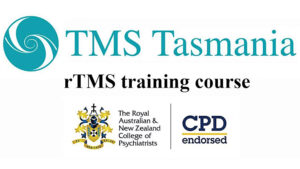Caitlin Cassidy
The Guardian 14th Jan
When Jane* was told her regular psychiatry appointments would no longer be covered under Medicare’s telehealth provisions, the news was so distressing she ended up being hospitalised.
“I had a crisis, and took an accidental overdose of my antidepressant,” she said. “I was taken by ambulance to casualty and wasted the night and most of Sunday [in hospital].”
Jane lives in Nowra, a two-and-a-half hour drive south of Sydney in the Shoalhaven, a coastal region of New South Wales with limited access to specialised mental healthcare.
When telehealth consultations were drastically expanded in March 2020, Jane was able to receive regular, bulk-billed sessions with a mental health nurse, working alongside a doctor at a Sydney-based private clinic.
But from 1 January, the federal government removed a 50% loading for some rural psychiatric services, meaning a string of consultation providers were no longer able to bulk-bill their items.
Providers are now faced with the option to either absorb the costs themselves or pass the load on to their patients, many of whom have limited financial means and struggle to pay gap fees.
Jane said the changes had been “devastating”.
“These telehealth sessions have become a lifesaver,” she said. “I didn’t have to drive to Shellharbour and waste at least half a day, and I wouldn’t have been able to afford the same amount of consultations as I had with telehealth.”
Those working within the mental health system told Guardian Australia they had been “blindsided” by the changes, which became public just weeks before coming into effect.
On 13 December, the federal health department announced $106m to make telehealth a permanent fixture of primary healthcare. But three days later, under subsequent changes to the Medical Benefits Scheme (MBS), 27 items were amended and 128 were scrapped, including item 288 for video psychiatric consultations through GP referrals.
Telephone access to an initial consultation with a psychiatrist was also removed, as was subsequent access to psychiatric consultations lasting more than 45 minutes.
Psychiatrist-provided psychotherapy telephone consultations typically require at least a 50-minute session.
Guardian Australia revealed how other changes, including the removal of phone consultations in place of video conferencing, would affect patients, particularly those with cancer.
Credentialed mental health nurse at Rural Outreach Mental Health Service, Grahame Gee, said he’d already had clients cancelling appointments in the new year because they couldn’t afford the fees.
“The service providers are doing their best to provide continuity of care but losing one-third of their income at very short notice will make it very difficult,” he said.
“A lot of the people I see have long-term complex mental health issues, they’re financially strapped, some of them might not be able to work because of their mental health issues … for them, it’s a case of deciding do I have ongoing support from a psychiatrist or do I pay for rent and food on the table?
“This is the dilemma … I’ve had patients who with the support and help of a psychiatrist can get back on the road to recovery.”
The Royal Australian and New Zealand College of Psychiatrists (RANZCP) has written to the minister for health and aged care, Greg Hunt, calling for urgent changes to the new arrangements.
The RANZCP president, associate professor Vinay Lakra, said making telehealth a more permanent feature of the health system considerably improved access to care but “serious gaps” needed to be addressed.
“The removal of item 288 is already having a devastating impact on access and affordability to psychiatric services for patients,” she said.
‘The need for a more Covid-safe capacity to ensure continuity of care between patients and psychiatrists in private hospital settings has probably never been as crucial as it is now.”
The president of the National Association of Practising Psychiatrists (NAPP), Dr Philip Morris, said the removal of the telehealth loading effectively ceased bulk-billed psychiatric consultations for patients in regional and rural areas, while removing telephone consultations would further lock at-risk patients out of the system.
People with complex histories of trauma or mental health needs have displayed a preference for telephone consultations above video, and others lack reliable internet, data or access to smartphones with video capabilities.
Morris is calling on the federal government to return the 288 item number for telehealth consultations, and reintroduce item 319, that provides a telephone option for consultations that last more than 45 minutes.
“We don’t want to disadvantage people in rural, remote and regional areas who have poor access to internet and other services, and we don’t want to disadvantage people who … can’t pay for internet services,” Morris said.
The Australian Association of Psychologists Inc executive director, Tegan Carrison, said AAPi wasn’t consulted prior to the changes coming into effect “or provided warning to sufficiently plan for the impact on client care”.
“AAPi has consistently lobbied for more mental health funding such as rural loading and increased rebates – particularly in regional and rural areas to address the access and affordability issues,” she said. “Now is the time we need to increase access, not reduce it.”
A spokesperson for the Department of Health said the changes to telehealth reflected recommendations by the MBS Review Taskforce and had been the subject of “extensive and broad consultation” with stakeholders.
“The ongoing telehealth arrangements modernise and embed permanent access to all Australians making service delivery more flexible,” they said.
“This is about improving access to video and telephone services provided by GPs, medical specialists and other health professionals that reflect clinical best practice.”
The spokesperson said the 50% loading item for 288 was initially introduced in 2011 to encourage medical specialists to take up video consults, addressing geographical barriers to specialist care.
“The uptake of video and telephone services since the introduction of universal telehealth in March 2020 demonstrates that these incentives are no longer needed,” they said.
*The Guardian has chosen not to use her full name


